Where is pollution from vehicles the most critical? Many might answer that question with "In Californian cities." Without a doubt, most of the efforts on reducing CO2 and pollution have thus far focused on personal vehicles. However, those are all partial zero emissions or better. Many in California are zero local emissions vehicles. Focusing on cleaning the cleanest vehicles ignores the elephant in the room. Diesel tractors hauling freight in cities is an easy target for pollution reduction.
Right now there are 43,000 drayage tractors operating in the United States. Drayage is the term for freight being moved from a port to a distribution center in or near a city. Right now, 16,000 pollution-spewing diesel trucks are working just in the Ports of Long Beach and Los Angeles, a number that is estimated to double to 32,000 by 2030.
Toyota is operating two trucks among that fleet of 16,000. Both emit nothing but water. The first was Toyota's Alpha truck. It has been hauling freight without creating any pollution for over a year. See our prior story, Zero Emissions Trucks - Toyota Walks the Walk While Tesla Talks the Talk. The new truck, nicknamed "Beta" is just now entering service.
“By evaluating the first truck in our test facilities and on the actual roads in the LA area, we made a list of improvements for the Beta truck build process and performance enhancements," said Andrew Lund, chief engineer for the project. He continued, "We needed to move beyond a proof of concept, which the first truck accomplished, to something that is not only better than the original but is also more commercially viable."
Toyota's electric semi trucks are powered by hydrogen fuel cells. Beta has a gross combined weight capacity of 80,000 lbs. That is the most important of its specification. (watch our fun video below for a surprisingly detailed overview of drayage operations and why they matter. Be forewarned, the gent in the video uses some pretty frank language.) The truck can operate for 300 total miles before stopping momentarily for a quick refuel. Unlike hydrogen fuel cell personal cars which are hard to argue make sense due to a lack of fuel stations, drayage trucks can refill at the port they return to after each trip. The trucks generate 1325 pound-feet of torque from two Mirai fuel cell stacks and a 12kWh battery.
“Our goal with the first truck was to see if it could be accomplished, and we did that,” said senior manager for Toyota’s North American Electrified Vehicle & Technologies Office, Craig Scott. “This time we're looking at commercial viability. We want to help make a difference—a significant difference when it comes to the air quality not only in the LA area, but across the U.S. and around the globe."


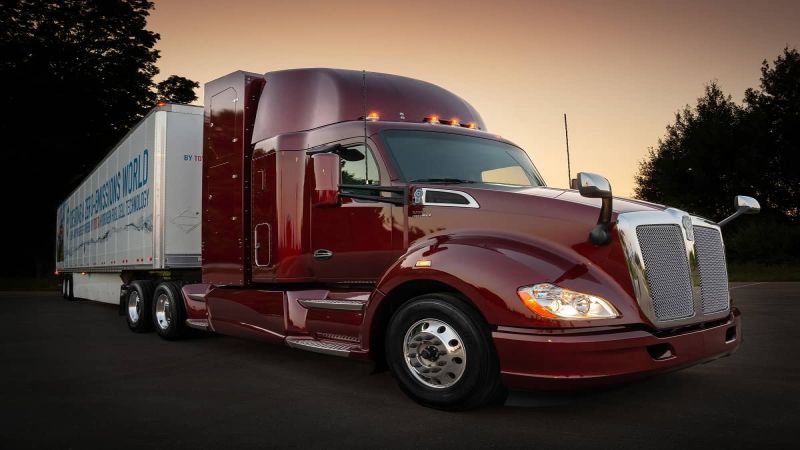




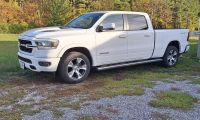
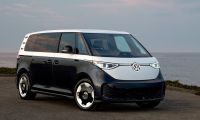
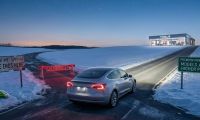
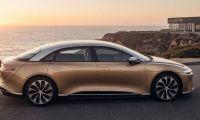
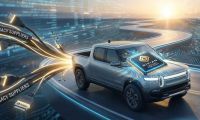
Comments
Toyota is definitely pushing
Permalink
Toyota is definitely pushing to support hydrogen, and I really like the idea of hydrogen vehicles, but the elephant in the room is the infrastructure to fuel up across the country. You are correct in mentioning that the current state of hydrogen stations is poor for supporting regular cars. But that also translates to semis as well. As you mentioned, it is an easier job to set up a few large hydrogen refueling stations at major shipping centers/ports for drayage support. But so far the steps to set up that plan is likely years away. The video that you provided is weak. The man is clearly a Tesla hater and even though his information about the semi pollution problem is true, his blindness in despising Tesla ignores the real viability of their electric semis. Japan is seriously backing hydrogen as an alternative to fossil fuels, and I wish them the best of luck. But they need to focus on creating a workable refueling network of stations for hydrogen vehicles to succeed.
Thank you. I try to be
Permalink
In reply to Toyota is definitely pushing by DeanMcManis (not verified)
Thank you. I try to be realistic about hydrogen passenger vehicles. I think it is ridiculous personally. However, drayage and local delivery trucks (garbage trucks, cement delivery trucks, food distribution trucks) have no problem with hydrogen infrastructure. They all already use captive energy (diesel) supply stations. These are the single most polluting vehicles in the country. Toyota is not trying to pretend it is working on long-haul semis. At least that I can see in its press materials. Hydrogen would also work great for the commuter trains in the Northeast, all of which are diesel, and all of which run empty half their runs.
Wow you think he is a hater
Permalink
In reply to Toyota is definitely pushing by DeanMcManis (not verified)
Wow you think he is a hater of Tesla! You've missed all the Proven facts like how electric batteries dont last very long in comparison to engines like hydrogen & so that means when you replace the batteries the old ones will go to over fill our land fills & they dont break down into compost! A Tesla semi starts at $150,000 & if they only last for 5-7 years @ a rate of driving only very short distances you'd be lucky if they hit over 100,000 miles yet currently Diesels last upwards of 1 million miles & sometimes more before the motors give out & start at $80,000, So if your ok with buying groceries at 10 times the price they are now then sure let's get Tesla semis. It takes two Tesla Semis to transport 4 Tesla cars where as you can fit 8 cars only any normal semi which the Toyota/kenworth Ev semis are able to haul & even worse the Tesla semi can only haul upto 4 of there cars But if they needed to haul 4 of there SUV crossovers or bigger they'd be shit out of luck. Elon Musk continually takes in money from investors & the government (meaning our tax dollars, instead of that money going to school or other more important things) Only to keep having these bullshit ideas similar to a kid wanting everything in a toy store & then never really getting there monies worth out of them & all U.S population only can watch as he wastes our money, while so many live in extreme poverty or worse. He is bullshit & honestly needs to be stopped not allowed to keep starting projects that haven't been fully thought out & means tested. Maybe if he just stuck to improving Teslas ability to produce instead of building the biggest factory in the world only to produce normal non technologically advanced battery that only will fill our land fills that much faster. In 15 yrs from now we will all start hearing of Mass Cancer or other diseases in people caused by chemicals in batteries or from the casings because with Tesla production increase in such volumes that I'm sure will have to continue to expand so instead of one Giga factory there will be one in every state in the country & So sure we'll get rid of the polluting diesel trucks but only to create 5 times the pollution they put out because those Giga factories can't all run on Solar panels & even the one that is being built now will not be able to come close to running solely on Solar especially at nights, which means they're going to need to ramp up electricity production at electric plants & the majority of them produce electricity by way of Burning Coal which is one of the most polluting things in the U.S. I know someones going to reply back saying that the solar panels will store electricity in batteries so the factory can run at night, News flash that only means tons more batteries that would have to be so many it would take up almost half the size of the solar array, even if you managed to have enough batteries, the Solar panels during the day time are only capable of producing enough electricity to partially run the factory so they don't have Any additional electricity that would be able to store in the batteries! Those trucks are no way in hell charging in 30 minutes & no matter how long or short they take to charge realize that over 90% of the electricity they use is produced at a Coal powered electricity plant, So the Honest truth is that the Tesla semis pollute our air just as much if not more then the current diesel powered semis! Think realistically, don't keep fooling yourself into thinking that one day our means of transportation & life itself will be exactly like Star Trek! If any of you sit at your computer 24/7:Gaming & thinking your a badass because you are writing shit on the computer Behind a screen trying to portray Tesla Semis as the only way to the future & yet have not seen the Sun in over a week cuz you have been in your moms basement & have no real clue about the real world & where or how food comes to your house!!! Then you shouldn't comment on anything ever!!!!!!